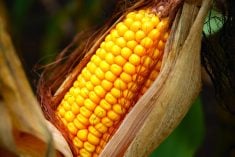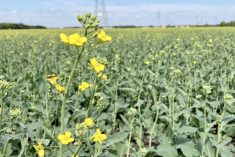A persistent and fiercely competitive weed that has developed resistance to several herbicide groups since its arrival in Canada is now the first in the country to fight off a Group 27 product.
Quebec’s Reseau d’avertissement phytosanitaire (RAP) last Friday reported a patch of waterhemp with resistance to mesotrione herbicide in the Haut-Richelieu municipality, in the province’s Monteregie.
A Group 27 HPPD enzyme inhibitor, mesotrione is the active ingredient in Syngenta’s Callisto herbicide and one of several in products such as Halex and Acuron, all used mainly for broadleaf weed control in corn crops.
Read Also

India slaps 30 per cent import duty on yellow peas
India has imposed a 30 per cent duty on yellow pea imports with a bill of lading date on or after Nov. 1, 2025.
Tests by the Centre de recherche sur les grains (CEROM) also confirmed resistance to Groups 2, 5 and 9 (atrazine, metribuzine and glyphosate respectively) in the same waterhemp patch, RAP reported.
Established in Ontario since 2002, Manitoba since 2016 and Quebec since 2017, having arrived via the central and eastern U.S., waterhemp is able to germinate all throughout a growing season.
The weed is also known to be highly prolific — a single plant can produce up to 300,000 seeds — and if left unchecked, has been known to cause yield losses of up to 73 per cent in infested corn and soy crops, RAP said.
The plant also grows rapidly, at a rate of up to 2.5 to three centimetres per day, and is tough to distinguish visually from relatives such as redroot and green pigweed.
Waterhemp patches in Ontario have previously shown resistance to groups 2, 5 and 9 and, more recently, Group 14. That group includes PPO inhibitors such as Syngenta’s Reflex and Corteva’s Goal, also used mainly for broadleaf weed control.
The Quebec agriculture ministry previously set up a support program to help corn and soy growers deal with waterhemp infestations. RAP, in its notice last Friday, urged affected producers to sign up for the program, to help limit the weed’s further spread in the province. — Glacier FarmMedia Network















